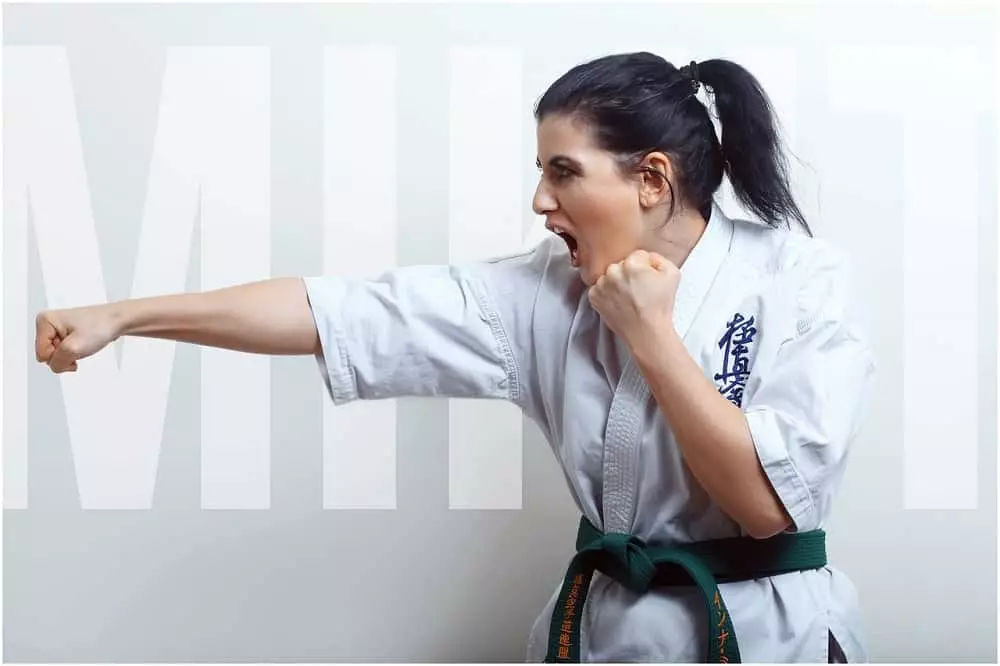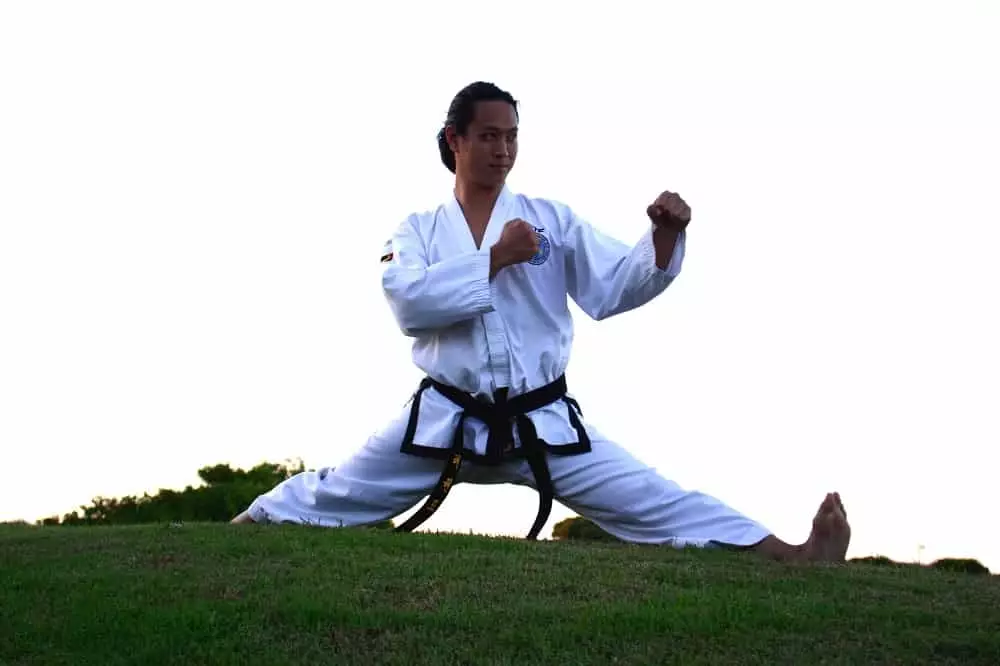Karate VS Taekwondo, one of the age old debates between martial arts.
So which is better?
Tough to say. Karate and taekwondo are two very popular martial arts that share many things in common, but also have noticeable differences.
Here’s a breakdown of both styles and some of the things that makes each one unique.

Table of Contents
Karate Basics
Karate is often thought of as a Japanese martial art, but it originated on the islands of the Ryukyu Kingdom before they were under Japanese rule.
Karate relies primarily on strikes to subdue opponents, but it also uses kicks and throws. While karate can be used for self-defense, it is commonly practiced for competitions.
In a competitive karate sparring match, called a kumite, points are scored by landing strikes and kicks on various parts of the body while utilizing good techniques.
The competitors, known as karateka, continue the match until one of them takes an eight-point lead, one gets knocked out, or until the end of the match. If a kumite ends without a knock out or clear winner, the karateka with the most points wins.
Like many other martial arts, karate has been refined by different teachers over the years. There are several different styles of karate with many of the differences being in form. However, the basics of karate remain regardless of the teacher style.
Karate Advantages
Karate offers several striking options to the karateka. But this doesn’t mean that great strength is required to be effective. A karateka who utilizes proper form harnesses the power of physics to gain the advantage over opponents.
Consider that a fist with a relatively small mass can do significant damage when it is given enough acceleration. The equation is force = mass * acceleration. Therefore, a strike will have more force when produced by a hand with smaller mass when the strike has the proper acceleration behind it.
And this is how karate is effective. It teaches you how to use the correct technique and strike dedication, so you deliver devastating blows using your fists and legs. In much the same way that
jiu-jitsu utilizes the power of leverage, karate exploits the force formula to level the field when there is a size discrepancy between opponents.
As with most martial arts, karateka get the added benefit of physical fitness. The moves of karate offer a full-body workout while the karateka learns a quality self-defense method. With that comes self-confidence when one recognizes that they can defend themselves if they need to.
But how does karate stack up against taekwondo? Well, there are some differences between the two. In this next section, I’ll go over the basics of taekwondo and the things that make it stand out against karate.

Taekwondo Basics
Taekwondo is Korean in origin and places more emphasis on kicks and foot movement, but like karate hand strikes are used in a minor way. The word taekwondo translates to “way of the foot and fist.” Although it has been developing in one way or another for several thousand years, modern taekwondo schools began in 1945.
Students of taekwondo, called jeja, learn much more than combat skills. This martial art teaches to live a way of life that promotes the values of being a good citizen and keeping peace in the world. But for the purposes of this article and comparing it to karate, I’m going to focus on taekwondo’s combat elements.
As with karate, taekwondo is recognized as a self-defense method and a competitive sport. Scoring points in a taekwondo match is accomplished by landing strikes and kicks to the torso, with more points being awarded for kicks to the head. Matches are won by either knocking your opponent out or by having the most points at the end of the rounds.
Taekwondo advantages
Undoubtedly, the thing that sets taekwondo apart from all other martial arts is the footwork involved. Specifically, its most unique kicks are quite high, aiming for the head area of the opponent. A properly executed taekwondo kick to the head is a sure way to inflict heavy damage on your adversary.
The emphasis on kicking in taekwondo provides an advantage, for those of us with more leg strength and less upper body strength. When combined with proper balance and flexibility, a taekwondo practitioner, also known as a taekwondo-in, is just as effective as any other martial artist.
A few of the benefits taekwondo provides a taekwondo-in are increased self-esteem, decreased anxiety, and better physical fitness. Researchers studying taekwondo not only validated these claims but have suggested it may be useful as part of a therapeutic treatment for mental health. Overall, taekwondo strives to improve both the individual student and all of society.
Conclusion
So, karate vs taekwondo, who wins the fight, the karateka or the taekwondo-in? Still too tough to say!
The karateka is going to take some mean kicks to the head, but the taekwondo-in will certainly be feeling the hard strikes of the karateka in the morning.
The saying that goes it’s not about the martial art, it’s about the person practicing the martial art rings true in this debate. Both are proven martial arts that are great to learn, but if I had to pick one, karate would be my choice—only because one of my favourite fighters of all time is the former UFC Welterweight and Middleweight Champion, Georges St-Pierre.